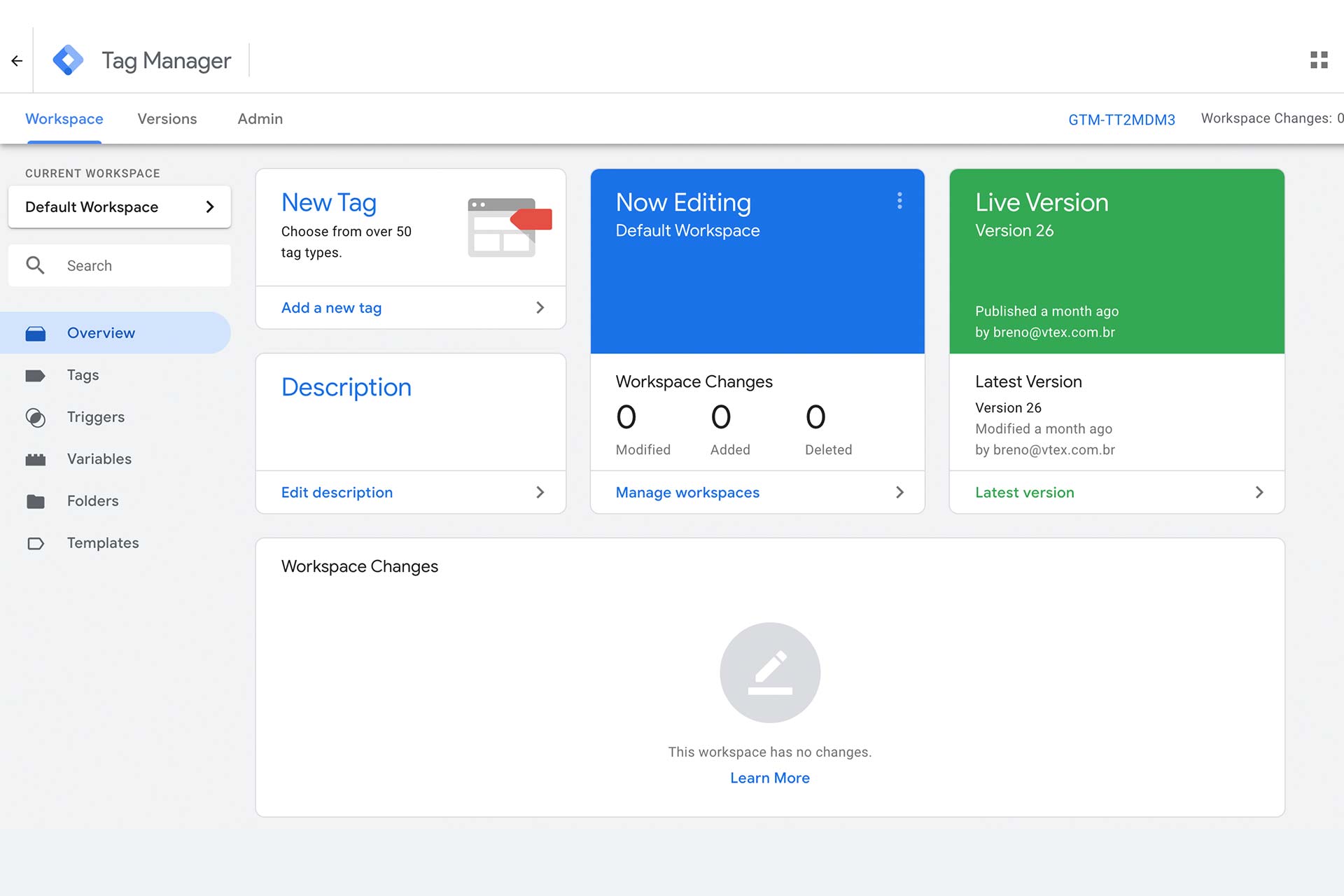In today's rapidly evolving digital landscape, where every click, interaction, and conversion holds immense value, businesses strive to streamline their online operations for optimal performance.
This is where Google Tag Manager emerges as a powerful ally. As a versatile tool designed to simplify the process of managing website tags and tracking codes, Google Tag Manager empowers businesses to efficiently gather essential data, make informed decisions, and enhance their online strategies. In this blog post, we delve into the fundamental aspects of Google Tag Manager, uncovering how it can substantially benefit your business by offering unprecedented control over your digital analytics and marketing efforts.
What is Google Tag Manager?
Google Tag Manager (GTM) is a user-friendly, web-based tool developed by Google that simplifies the process of managing and deploying various tracking codes, tags, and snippets of code on a website or mobile app. Instead of manually inserting code directly into your website's source code, GTM provides a centralized platform where you can easily add, edit, and organize tags without needing extensive technical expertise or constant assistance from developers.
These tags can include various types of tracking codes, such as:
Analytics Tags: Tags from platforms like Google Analytics, Facebook Pixel, and other third-party analytics tools to track user behavior, site traffic, and conversions.
Conversion Tracking Tags: Tags that monitor specific actions users take on your website, such as making a purchase, filling out a form, or signing up for a newsletter.
Remarketing Tags: Tags that enable you to retarget users with relevant ads based on their previous interactions with your site.
Ad Tracking Tags: Tags that work with advertising platforms to measure the effectiveness of your advertising campaigns and optimize your ad spend.
Custom HTML Tags: Tags containing custom code snippets for specialized tracking or functionality.
The main advantage of using Google Tag Manager is its simplicity and flexibility. It allows marketers and website administrators to take control of their website's tracking and analytics without relying on developers for every code implementation. Changes can be made in the GTM interface, and they are then reflected on the website without requiring direct code edits. This saves time, reduces the potential for errors, and allows for more efficient testing and deployment of various tracking solutions.
Overall, Google Tag Manager is a valuable tool for businesses of all sizes as it enhances the accuracy and depth of data collected, improves marketing campaign tracking, and enables more responsive and effective digital strategies.
How can GTM help your business?
Google Tag Manager offers several benefits to businesses of all sizes and industries. Here are some ways it can help:
Simplified Tracking Management: GTM provides a user-friendly interface that enables marketers and non-technical users to manage and deploy various tracking codes without needing extensive coding skills. This empowers businesses to quickly implement and update tags, reducing reliance on developers for every tracking-related task.
Faster Deployment: With GTM, you can make changes to your tracking codes and tags directly through the platform, eliminating the need to wait for developers to implement changes. This speeds up the process of launching new campaigns, tracking user interactions, and testing new strategies.
Reduced Website Bloat: Traditional tag implementation often involves adding multiple lines of code directly to your website's source code. This can slow down website performance and increase the risk of conflicts between tags. GTM centralizes all tags in a single container, reducing the overall code on your website and improving loading times.
Enhanced Data Accuracy: GTM's streamlined process for adding and editing tags reduces the likelihood of introducing errors during code implementation. This helps maintain accurate tracking of user behavior, leading to more reliable data for analysis and decision-making.
Flexible Tag Management: The platform offers conditional triggers and variables that allow you to control when and where tags fire. This flexibility ensures that tags are triggered only in specific scenarios, optimizing the accuracy of data collection and reducing unnecessary tracking.
Efficient Testing: GTM includes a preview and debugging mode that allows you to test how tags behave in real-time before deploying them to your live site. This minimizes the risk of faulty tags affecting user experience or data quality.
Version Control: GTM maintains a history of changes made to your tags, making it easy to revert to previous versions if needed. This feature is especially useful for troubleshooting issues and ensuring consistent tag deployment.
Collaboration: GTM supports multiple users with different access levels, enabling collaboration between marketing teams, developers, and other stakeholders while maintaining security and control.
Integration with Other Tools: GTM seamlessly integrates with various analytics and marketing platforms, such as Google Analytics, Google Ads, and Facebook Pixel. This allows you to consolidate your data and streamline your marketing efforts.
Cost Efficiency: By reducing the reliance on developers for tag implementation and management, businesses can save both time and money. This is especially valuable for smaller businesses with limited resources.
In essence, Google Tag Manager empowers businesses to efficiently manage their tracking codes, gather accurate data, and optimize their digital strategies with greater control and flexibility. It's a tool that simplifies the complex world of tracking and analytics, contributing to more informed decision-making and improved online performance.


